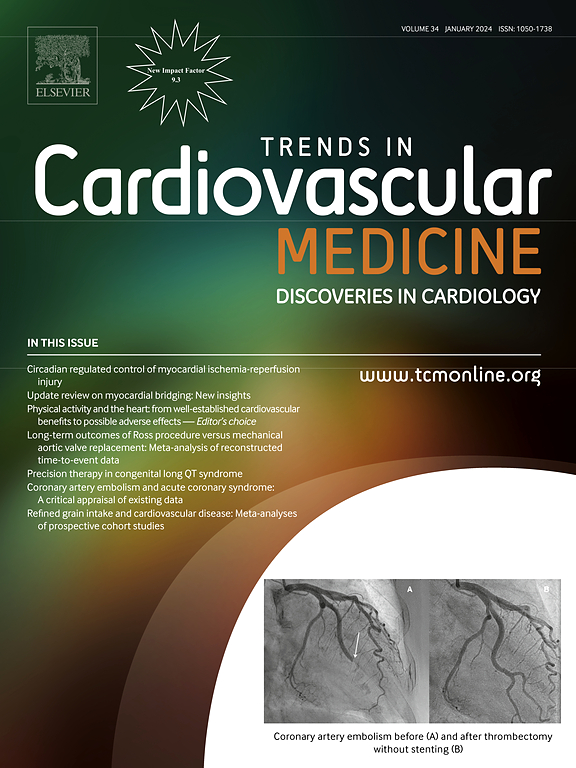推进房颤和中风的个性化护理:人工智能从预防到康复的潜在影响
IF 9
2区 医学
Q1 CARDIAC & CARDIOVASCULAR SYSTEMS
引用次数: 0
摘要
心房颤动(AF)是一种由各种潜在病理生理障碍引起的复杂疾病,是世界上最常见的心律失常,影响了2%的欧洲人口。这种流行率随着年龄的增长而增加,造成了重大的财政、经济和人力负担。在欧洲,中风是导致死亡的第二大原因,也是导致残疾的主要原因,由于老龄化和存活率的提高,预计中风人数还会上升。房颤相关中风的功能恢复通常不令人满意,导致住院时间延长,严重残疾和高死亡率。尽管房颤和中风的研究取得了进展,但房颤和中风之间的病理生理和管理问题越来越需要人工智能(AI)和机器学习(ML)等创新方法。目前的风险评估工具侧重于静态风险因素,忽视了受急性疾病、老龄化和合并症影响的风险的动态性质。结合生物标志物和自动心电图分析可以增强对病理生理学的理解。本文强调了房颤和卒中管理中个性化、综合方法的必要性,强调了人工智能和机器学习在改善风险预测、治疗个性化和康复结果方面的潜力。进一步的研究对于优化护理和减轻房颤和卒中对患者和医疗系统的负担至关重要。本文章由计算机程序翻译,如有差异,请以英文原文为准。
Advancing personalised care in atrial fibrillation and stroke: The potential impact of AI from prevention to rehabilitation
Atrial fibrillation (AF) is a complex condition caused by various underlying pathophysiological disorders and is the most common heart arrhythmia worldwide, affecting 2 % of the European population. This prevalence increases with age, imposing significant financial, economic, and human burdens. In Europe, stroke is the second leading cause of death and the primary cause of disability, with numbers expected to rise due to ageing and improved survival rates. Functional recovery from AF-related stroke is often unsatisfactory, leading to prolonged hospital stays, severe disability, and high mortality.
Despite advances in AF and stroke research, the full pathophysiological and management issues between AF and stroke increasingly need innovative approaches such as artificial intelligence (AI) and machine learning (ML). Current risk assessment tools focus on static risk factors, neglecting the dynamic nature of risk influenced by acute illness, ageing, and comorbidities. Incorporating biomarkers and automated ECG analysis could enhance pathophysiological understanding.
This paper highlights the need for personalised, integrative approaches in AF and stroke management, emphasising the potential of AI and ML to improve risk prediction, treatment personalisation, and rehabilitation outcomes. Further research is essential to optimise care and reduce the burden of AF and stroke on patients and healthcare systems.
求助全文
通过发布文献求助,成功后即可免费获取论文全文。
去求助
来源期刊

Trends in Cardiovascular Medicine
医学-心血管系统
CiteScore
18.70
自引率
2.20%
发文量
143
审稿时长
21 days
期刊介绍:
Trends in Cardiovascular Medicine delivers comprehensive, state-of-the-art reviews of scientific advancements in cardiovascular medicine, penned and scrutinized by internationally renowned experts. The articles provide authoritative insights into various topics, encompassing basic mechanisms, diagnosis, treatment, and prognosis of heart and blood vessel disorders, catering to clinicians and basic scientists alike. The journal covers a wide spectrum of cardiology, offering profound insights into aspects ranging from arrhythmias to vasculopathies.
 求助内容:
求助内容: 应助结果提醒方式:
应助结果提醒方式:


